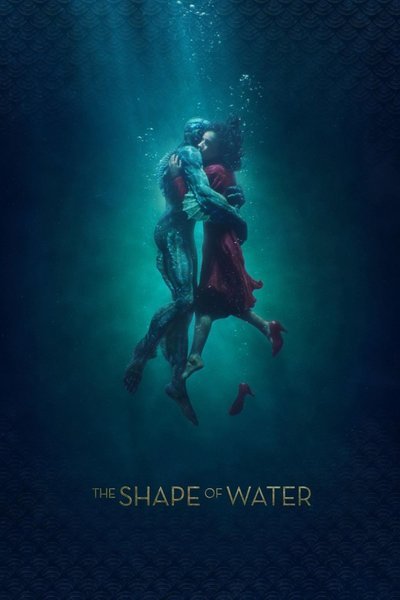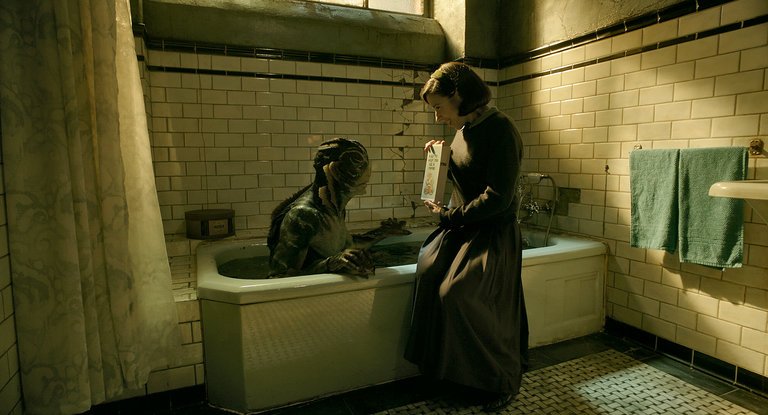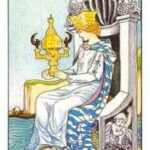 Filmgoers may have laughingly dismissed Godzilla, the Teenage Werewolf, and The Creature from the Black Lagoon in the 1950’s, but nobody laughs at the real-life monsters we see on television every day in the form of terrorists, genocidal dictators, and political leaders who incite divisiveness and spout nuclear threats. We get it. Dystopia is us. Our problems are caused by humanity’s psychological and spiritual ignorance, and they will not be resolved until enough individuals acquire more mature and humane ways of thinking and behaving. What used to be the role of deities and religious authorities has now become everyone’s job.
Filmgoers may have laughingly dismissed Godzilla, the Teenage Werewolf, and The Creature from the Black Lagoon in the 1950’s, but nobody laughs at the real-life monsters we see on television every day in the form of terrorists, genocidal dictators, and political leaders who incite divisiveness and spout nuclear threats. We get it. Dystopia is us. Our problems are caused by humanity’s psychological and spiritual ignorance, and they will not be resolved until enough individuals acquire more mature and humane ways of thinking and behaving. What used to be the role of deities and religious authorities has now become everyone’s job.
Fortunately, there are seers among us to show us the way. They are the courageous and gifted artists who create books and films depicting ordinary people who evolve into heroic individuals. The Star Wars series, Avatar, Arrival, and The Shape of Water are examples. Their mythic themes and archetypal characters limn the shape of our own souls. Everyone enjoys a good story. But do we realize these stories are about us? Do we understand their metaphors and decipher their symbols? Do we apply their lessons to our own lives?
Each of us contains a possible hero like Luke Skywalker, an indomitable Amazon heroine like Princess Leia, a Wise Man like Yoda, a menacing Warrior like Darth Vader. You may relate to Avatar’s Jake Sully, a vulnerable wounded Warrior with the potential to be healed by love, but his counterpart—the dark side’s ruthless, power-hungry Colonel Miles Quaritch—also lives in you. Regardless of your gender you can activate the healing of an Earth Mother like the Na’vi’s Mo’at, a beautiful Beloved like princess Neytiri, or a benevolent Wise Woman like Dr. Grace Augustine. Archetypes are latent patterns of energy in everyone’s soul. They teach and empower us when we listen.
Consider Arrival’s gentle Louse Banks, a linguist who’s tormented by intuitions and visions which fill her with confusion and dread. She’s the image of a person in whom the Mediatrix archetype is activated. When the U.S. Army recruits her to communicate with alien life forms hovering over the earth, she breaks the rules to gain their trust. In a blog post titled “Arrival: How the Feminine Saves the World,” depth psychology expert Carol S. Pearson notes this “reveals how traditional elements of the Lover archetype are morphing to meet new challenges.” The world leaders see the aliens as dangerous threats and are preparing to make war on them. But because Louise is motivated by love, not fear, she sees them as wondrous life forms to communicate with and befriend. This prompts us to ask ourselves: Do I respect people and species different from me? Do I listen to the subtle messages of my body? Do I befriend my thoughts and emotions or try to ignore them?
 In The Shape of Water, an even more vulnerable heroine saves the life of an amphibious monster. The year is 1962. Elisa is a mute, mousy janitor on the night shift of a top-secret government research lab desperate to get one-up on the Russians. One night a promising “asset” arrives in a portable tank in the form of a scaly green creature-from-the-Black-Lagoon lookalike from a Brazilian rainforest where he was worshiped as a god. Deeply drawn to this equally voiceless and powerless creature, Elisa initiates a fairy-tale romance with him by playing Benny Goodman on her portable record player, placing hard-boiled eggs on the lip of the tank in which he’s confined, and teaching him sign language when he emerges from the water to eat them.
In The Shape of Water, an even more vulnerable heroine saves the life of an amphibious monster. The year is 1962. Elisa is a mute, mousy janitor on the night shift of a top-secret government research lab desperate to get one-up on the Russians. One night a promising “asset” arrives in a portable tank in the form of a scaly green creature-from-the-Black-Lagoon lookalike from a Brazilian rainforest where he was worshiped as a god. Deeply drawn to this equally voiceless and powerless creature, Elisa initiates a fairy-tale romance with him by playing Benny Goodman on her portable record player, placing hard-boiled eggs on the lip of the tank in which he’s confined, and teaching him sign language when he emerges from the water to eat them.
As it turns out, the real monster in this story is Richard Strickland, a sadistic, square-jawed military officer who tortures the green man, sexually harasses Elisa, and makes racist comments to Zelda, her co-worker. Overhearing the scientists’ plans to kill and dissect her beloved in the name of science, a frantic and determined Elisa enlists the help of Zelda and her gay neighbor, Giles, to rescue him. The remainder of the film builds the tension amid a dreamy, watery green ambiance before reconciling it in a surprise ending that leaves us wondering: What just happened? Is he what he seems? Do I have it in me to do what she did? Does love really have a god-like power? How strong is my Lover archetype? Do I truly know how to love?
The characters in these films play out their roles against a backdrop of mythic themes:
-
the destructiveness of our shadow Warriors
-
the crises and suffering necessary for the making of a hero/ine
-
the need to respect, communicate with, and accept help from other people and species
-
love’s victory over ignorance and hatred




19 Responses
I look forward to seeing this soon, thank you. I have just enjoyed the film “Three Billboards…”, where Frances McDormands’s character plays a heroic role; she reminded me of ( the Egyptian goddess) Sekhmet.
You’re welcome, Jeanie. Cool. You spell your name the same way I do! I’m hearing so much about “Three Billboards…” and can’t wait to see it. I didn’t know anything about the plot so am especially pleased to hear it has an archetypal aspect! Thank you for writing. I appreciate the heads up! Jeanie
Reblogged this on lampmagician.
Much appreciation for the reblog! Jeanie
Great Read Jeanie, Happy to read from you again ❤❤☺
Dear Jeanie, This is such a great article! It’s simply wonderful to read more of your deep Crone-wise words again, for I always miss them while you’re away busy creating a new book in the Great Mother’s alchemical kitchen. How true it is that more and more we find ourselves in the role of the immortals themselves, encountering (like Odysseus) turbulent seas, terrifying monsters and blind prophets and instead of the Gods and Goddesses saving us, we must now learn how to save ourselves, to reach “God/dess” within.
I’m also deeply indebted to the seers and sibyls amongst us! Although I do struggle at times with the title, “Prophet” (it feels a bit guru-ish?) much prefer “Shepherd” to describe those among us born to guide, tend and herd the flock (however defined). Apart from “Star Wars” and “Avatar” I haven’t seen the other films but I do love your exploration of their mythological themes and rich archetypal characters. Myself, I’m a huge Lord of the Rings and The Hobbit film fan who really enjoys the “dark versus light” theme.
All stories are holy, they bring us to wholeness. Yesterday I read a new story, a carpet of white roses … integrated male and female, the beautiful shape of change to come! It’s so cheering to hear the role of hero is being given to more and more women in tv shows and films. Yay! A true and rightful shift in the spirit of our times. I agree, it will be through the resurrection of the way of the wild feminine, that change will continue to unfold. Let us watch more and more of our “walled women” break free! Love and blessings, Deborah.
Love and blessings to you too, Deborah.
Yes, come to think of it, I like the terms seer and sibyl a bit better than prophet too. My favorite image of these is the Delphic Sibyl on the ceiling of the Sistine Chapel. Years ago I bought a large round platter from a potter in Deruta, Italy with her compelling image on it and have it displayed in a place in my house where I pass by it several times every day.
Hmm…..this gives me an idea for a new blog post….seers and sibyls indeed! Images of the Mediatrix archetype. By the way, there’s a chapter devoted to this archetype in my new book. 🙂 There is a compelling need for her in our time. Actually, there’s always been a need for her. We have such a difficult time hearing the voice of the deep feminine. But it appears the time has come when we are listening to her for a change instead of treating her the way the Trojan princess Cassandra was….by ignoring and maligning her.
These are most interesting times, pregnant with so many birthings of the archetypal feminine in all her iterations. Yes, we are watching our “walled women” breaking free, and it’s a beautiful sight to behold. You and I are two of them.
Love and blessings to you, my sister. Jeanie
A whole chapter devoted to the sibyls! Excellent, can’t wait! If you haven’t already seen Nina Paley’s animated ancient goddess video, “You Gotta Believe” you must! Here’s the link: https://vimeo.com/253135841 If it doesn’t work you can find it on my Twitter page.
Oh, Deborah! I love, love, LOVE that music video! What a hoot! Thanks so much for recommending it. I’m sending it to all the goddesses in my life! 🙂
Thank you for this video link! Absolutely adore it! 🙂 🙂 🙂
Yes, thank you, Deborah. As Darla notes, it certainly is adorable!
Brilliant post! As usual, you are eloquent and evocative … and in perfect timeliness as well. 🙂 I hadn’t heard about the movie The Shape of Water so have now added it to my reminder calendar to check in a few months on its wider availability.
Connecting to the archetypes within stories, whether books or movies, is a current project of mine that is embedded within my latest manuscript, i.e., as I seek to understand the culture of my ancestors here in southwestern Missouri, I’m exploring the archetypes within several local stories including the Arcadian “The Shepherd of the Hills” and the nearly-flip-side graphic nature of Twain’s “Huckleberry Finn” as well as an Osage myth and probably others. So you can see how much I appreciate this post of yours! 🙂
Your project sounds absolutely fascinating, Darla. Also very timely. Using cultural output like stories, films, song, myths, visual art, etc.—to draw attention to the valuable underlying psycho-spiritual meaning so often missed by the general public is a brilliant teaching and consciousness-raising tool!
And thank you for your kind comments about this post. You’re going to love The Shape of Water.
Great post! The theme of Earth and Water has been coming up a lot for me lately. Still trying to make sense of it… and this is very helpful!
Thanks, Marla. I’m glad you liked it. Did you know that of the four elements, two, Earth and Water, are feminine, and two, Air and Fire, are masculine? To me, this speaks to the innate balance in us and the world, and the cooperation between the opposites, both of which are essential to the creation and maintenance of life. Sounds like the emphasis in your life at the moment is on the feminine! Best, Jeanie
Oh, thats’s interesting! I just had a baby, actually, and I’m feeling motherhood to be so different from everything I’ve experienced in my life. Lots of vivid dreams and childhood memories too.
Thanks for your insight 🙂
That would explain it! You’re most welcome. Jeanie
Thank you. This is fascinating, Jeanie. Like you, I think Archetypal Feminine values are the only thing that can save us. It’s interesting how change appears in subtle cultural ways that are easy to miss. Thank you for noticing and sharing your insights with the world (and me).
As I marched with 15,000 women on January 20 in Seneca Falls, NY, the birthplace of the first women’s right’s conference, I felt how we women and men must be the saviors and never give up. That’s hard when there is strong aversion and I want to look the other way. It’s hard when I look at most political leaders or read their words and cringe. It’s hard when I feel discouraged and hopeless, but the Feminine Hero stays, so I will stay, too. I hope She moves quickly.
Thank you, Elaine. Yes, the Feminine Hero stays, and neither you nor I will stop trying to help her. Nor will Carol S. Pearson, whose latest book, Persephone Rising: Awakening the Heroine Within, deals with just this topic. She points out that many of us are Persephones who have risen from suffering and adversity to re-emerge as strong confident heroines who listen to and follow their internal guidance. If you haven’t read it, I highly recommend it. It could be just the book to inspire you and bring the hope and comfort you need at this point in time…. Blessings, Jeanie